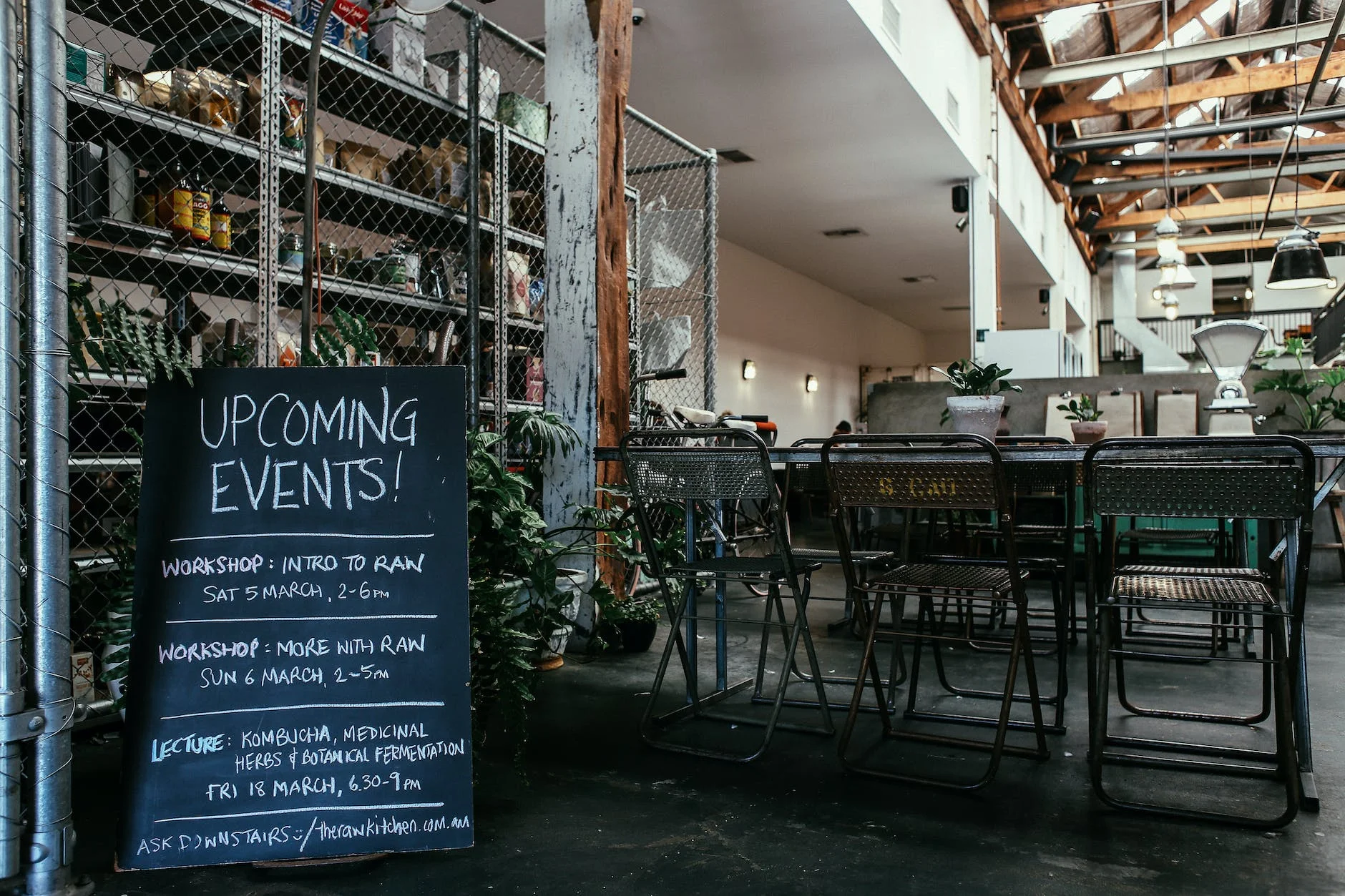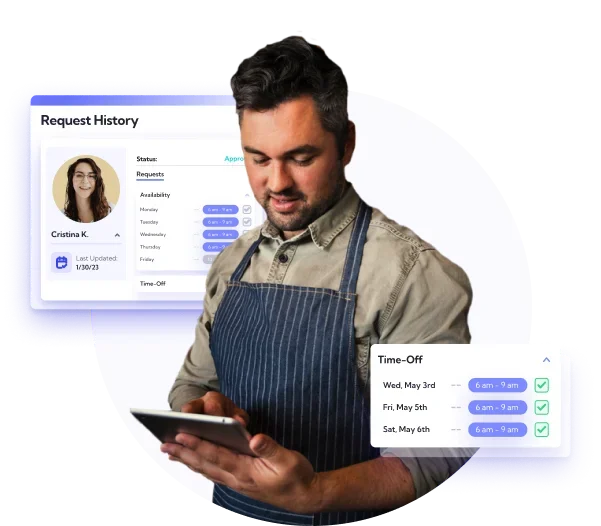Article
Flexible Scheduling in Restaurants and How to Implement It
Discover the benefits of flexible scheduling in the restaurant industry and learn practical strategies for successful implementation. Explore how adaptable work schedules can enhance employee satisfaction, improve retention rates, and optimize overall operational efficiency within restaurants.
Flexible scheduling has become increasingly popular in recent years, and for good reason. It allows restaurant employees to have more control over their work schedules, which can lead to increased job satisfaction, better work-life balance, and improved retention rates. In the restaurant industry, where 12-hours shift and unpredictable schedules are the norm, implementing flexible scheduling practices can be a game-changer.
In this article, we'll explore the benefits of flexible scheduling in restaurants, how to implement it, best practices, and potential challenges that may arise.
What Are Flexible Work Schedules?
Flexible scheduling involves giving staff more control over their restaurant work schedules. This approach allows them to select the hours and days they work based on their personal needs and preferences. The main objective of flexible scheduling is to create a better work-life balance for restaurant staff while still meeting the operational needs of the restaurant.
Flexible restaurant scheduling can take many forms, including:
Job sharing
Job sharing involves two or more employees sharing the same job, which allows them to split the hours between them.
Part-time or seasonal work
This involves offering part-time or seasonal work to staff members to accommodate their schedule needs.
Split shifts
Split shifts involve dividing the workday into two or more shifts, with team members working part of the day, then taking a break, and returning to work later.
Flextime
Flextime involves allowing employees to choose their start and end times, as long as they complete the required number of hours.
Compressed workweeks
Employees work longer hours per day but fewer days per week.
Check out our free restaurant work schedule template.
The Benefits of Flexible Scheduling in Restaurants
Flexible scheduling offers several benefits to both employees and employers in the restaurant business. Some of these benefits include:
- Increased employee retention: The restaurant industry grapples with a high turnover rate, averaging around 75%, a figure that has seen an uptick post-pandemic. When employees feel like they have control over their shift schedules, they are more likely to stay with their employer for the long term.
- Better workforce management: This type of scheduling allows employers to manage staffing levels more efficiently, ensuring adequate coverage during peak hours while avoiding unnecessary labor costs during slower periods.
- Improved morale and engagement: Employees who have control over their work schedules are generally happier and more motivated, and more likely to feel engaged in their work and take ownership of their job responsibilities.
- Increased operational agility: Flexibility in scheduling enables restaurants to adapt quickly to changing customer demands and staff availability, contributing to smoother operations and improved customer service.
- Better productivity: When employees are allowed to work during the times they are most productive, they are likely to be more efficient and get more done.
- Improved work-life balance: Flexible scheduling allows employees to balance their work and personal lives more effectively, reducing stress and burnout.
How To Implement Flexible Scheduling In Your Restaurant
Implementing flexible scheduling practices in your restaurant can be a challenge, but it's worth the effort. Here are some steps you can take to successfully implement it:
1. Assess Your Staffing Needs
Before implementing flexible scheduling practices, it's important to assess your staffing needs. 98% of restaurateurs report back-of-house understaffing, while 73% face front-of-house shortages, underscoring critical workforce challenges in the industry. Determine how many employees you need to have on staff at any given time to ensure that your restaurant runs smoothly.

2. Conduct an Employee Survey
Before implementing flexible scheduling, it is important to understand your employees' needs and preferences. Conduct a survey to determine what your employees want and need from their work schedules.
3. Create a Flexible Scheduling Policy
This one is very important. Develop a clear policy that outlines the rules and procedures for flexible scheduling in your restaurant. This policy should include information about how employees can request changes to their schedules, how to handle conflicts, and how to communicate changes to the team.
4. Provide Training to Managers and Employees
Provide training to managers and employees on how to implement and manage flexible scheduling practices. This can include training on employee scheduling software and how to communicate effectively with team members.
5. Use Restaurant Scheduling Software
Consider using scheduling software to help manage your employees' schedules. Scheduling software can help you create schedules quickly and easily, and can also help you with employee time tracking, availability, time off requests and managing shift swaps. Restaurant scheduling tools such as Lineup.ai can help you facilitate scheduling needs by providing the following features:
Automatic labor forecasting: Using historical POS data and real-time external factors, Lineup.ai generates precise labor hour suggestions, enabling efficient workforce management for fluctuating demand.
Easy schedule builder: With an intuitive interface, managers can swiftly create adaptable schedules that accommodate employee preferences and fluctuating business needs.
Schedule templates: Lineup.ai offers customizable schedule templates, allowing for quick adjustments and simplifying the process of creating flexible schedules tailored to specific business requirements.
Built-in shift swapping: The platform facilitates seamless shift exchanges among restaurant staff using their phones, and managing PTO requests, making it easier to optimize staff scheduling.

6. Monitor and Adjust
Monitor your employees' schedules and make adjustments as needed. Be open to feedback from your employees and make changes to your policy and procedures based on their feedback.
Best Practices For Flexible Scheduling in Restaurants
To ensure schedule optimization in your restaurant, here are some best practices for flexible scheduling to follow:
Be Open and Honest With Your Staff
Internal communication is key when it comes to flexible scheduling. Be transparent with your staff members about their schedules, and listen to their feedback. This will help you create a work environment where employees feel valued and heard.
Provide Advance Notice
This is called predictive scheduling. Predictive scheduling typically involves providing employees with advance notice of their work schedules, often within a specific timeframe, to allow them to plan their personal lives and other obligations accordingly. By giving employees adequate notice of their schedules, employers can comply with predictive scheduling regulations and help reduce potential scheduling conflicts.
Set Clear Expectations
Make sure your employees understand the expectations for their job responsibilities and the impact of their work on the restaurant's operations. This can help them take ownership of their work and be more engaged in their job.
Create a Fair Scheduling Process
When creating schedules, ensure that the process is fair and transparent. Consider employee availability, seniority, and other factors when assigning shifts.
Allow for Flexibility
Flexible scheduling works best when it is truly flexible. Allow employees to swap shifts or adjust their schedules as needed, as long as it does not negatively impact the restaurant's operations.
Potential Disadvantages of Flexible Schedules in Restaurants
While flexible scheduling offers many benefits, it can also pose some challenges. Some potential challenges include:
Increased administrative work
Implementing flexible scheduling can require more administrative work to manage schedules, track employee hours, and communicate changes.
Difficulties in managing shift coverage
With employees having more control over their schedules, it can be challenging to ensure that all shifts are covered and the restaurant's operations run smoothly.
Difficulty in creating a fair and equitable system
Creating a fair and equitable scheduling system can be challenging, especially when dealing with employee availability, seniority, and other factors.
To overcome these challenges, it is essential to have clear policies and procedures in place, effective communication with employees, and the use of scheduling software to help manage employee schedules.
FAQs
What is an example of a flexible schedule in a restaurant?
Employees are offered the flexibility to select their start times between 8-10 a.m. and departure times between 4-6 p.m. Additionally, they can choose to work three extended shifts per week or mix morning and evening shifts, providing them with schedule flexibility to manage personal commitments alongside work responsibilities.
How many hours is a flexible schedule in a restaurant?
A flexible schedule in a restaurant typically ranges based on various factors including the specific needs of the business and the preferences of the employees. It can vary from part-time positions with fewer than 30 hours per week to full-time positions with 35-40 hours per week. However, the specific number of hours can differ depending on the restaurant's operating hours, staffing requirements, and local labor regulations.
Further read: